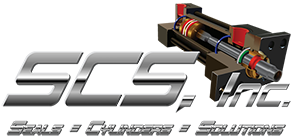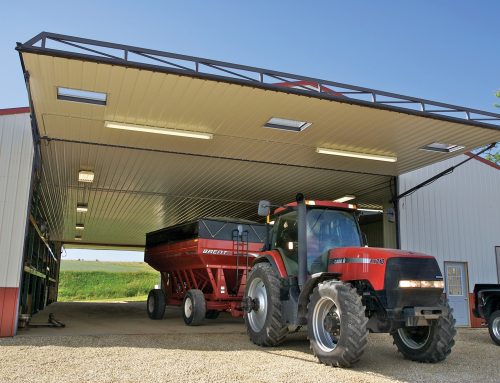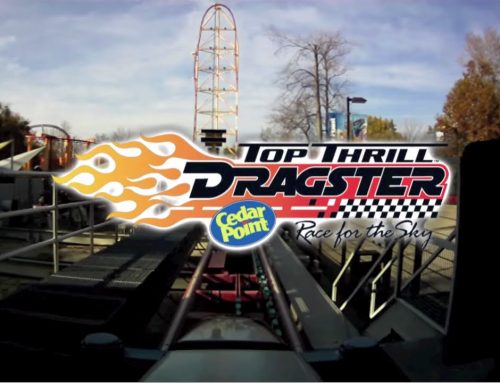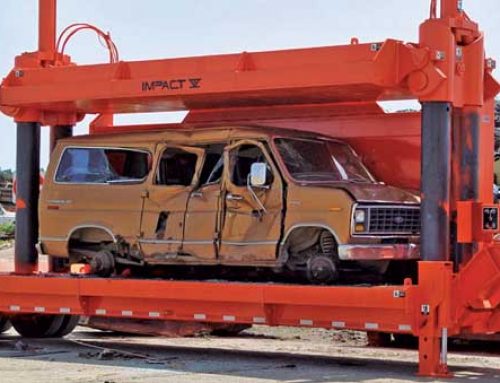When I first started working for HOT ROD magazine more than 30 years ago, nearly all American domestic production cars used a thick, 5/64-5/64-3/16-inch piston-ring package. The top, usually plain-iron, ring may or may not have been moly-filled. The oil ring was invariably a standard-tension configuration. Full-on race cars used thin, 1/16-1/16-?-inch piston rings. If available, they may have opted for a ductile-iron moly or chrome top ring with a low-tension oil ring. Just about everyone used a plain-iron second ring, although a few companies were pushing a moly second ring as well. The big debate was whether a daily street driver dared install 1/16 compression rings and low-tension oil rings.
Now, everything has changed: 1/16 rings are considered thick, and even production V-8s use thin metric-sized rings-such as the typical GM LS engine’s 1.5-1.5-3mm ring pack (about 0.059-0.059-0.118 inch). Ductile iron is now considered the minimum material for serious performance usage, with many racers and even production cars moving up to steel in the top groove. Second rings have become fancier, and even standard-tension oil rings are now thinner and lighter. The impetus for these changes has been OEM requirements to reduce friction for improved gas mileage and better sealing for emissions reduction. Racers have picked up on the new developments and run with them because reduced friction and improved sealing are worth power. Thinner rings also offer the potential for greater conformity to the cylinder wall. Improved precision, piston and ring manufacturing technology, better engine oils, and superior cylinder wall finishing techniques make it possible for engine builders to go to ever-thinner rings.

Ring Function
Understanding current ring developments first requires a brief overview of piston ring function. A piston ring set must do three things: prevent the air/fuel mixture from escaping the combustion chamber, prevent oil from contaminating the combustion chamber, and transfer heat out from the piston to the cylinder wall and ultimately into the cooling jacket. In most cases this is accomplished by a set of three rings, classified (from top to bottom) as the top compression ring, the second compression ring, and the oil control ring. Modern research shows that the top compression ring actually accomplishes most of the sealing function, while the second compression ring serves more as an additional oil control device than it does as a compression sealer. The current trend is to enhance top ring quality and heat resistance for the best possible sealing while revising second ring configurations to boost their oil scraping ability.

The Top Ring
This is the ring that is subject to the severe heat and pressure of combustion gases. It has a tough job, made even tougher because the top ring is getting thinner. For most high-performance usage, rings made from ductile iron with a moly (molybdenum) face remain the most popular choice. Moly can take the heat in most applications yet is porous enough to hold oil for better lubrication. Your favorite ring manufacturer’s traditional part numbers for classic 5/64 or 1/16 performance moly rings probably haven’t changed, but the ring itself most likely will be made with higher tolerances using an improved manufacturing process. For example, the moly facing used to start out in wire form and was flame-sprayed onto the ring with an oxyacetylene torch; now it’s plasma-sprayed at greater velocity and temperatures resulting in a higher, more uniform moly density on the ring face.

Power-adder apps, including nitrous oxide, superchargers, and turbochargers, may require more sophisticated ring materials. Although plasma-moly is very conformable with good wear characteristics, the high shock loads of 150-plus-horsepower nitrous oxide shots, or more than 10 psi of boost, may cause fractures, chipping, or flaking. “It isn’t a matter if
The modern, thin, metric rings also need to be made from better materials to maintain adequate strength, prevent flutter, and withstand greater heat. For them, high-carbon steel is usually the baseline material of choice. Steel used to be considerably more expensive than iron, but thanks to huge volume purchases by OEM manufacturers, the price is coming down in much the same way that hydraulic roller cams have become affordable. Many of the pistons in JE’s new SRP Pro line use thin rings, but JE says pricing is now about the same as its old 1/16 rings.
According to Speed-Pro, plasma-moly remains the preferred coating for steel rings, although gas-nitriding is starting to supplant it. Somewhat akin to the hardening process typically applied to forged crankshafts, gas-nitriding is a surface treatment that hardens the ring face to make it wear resistant while still remaining compatible with the cylinder-wall and piston surfaces. OEM rings with gas-nitriding are intended to last for up to 200,000 miles.

Dirt track cars have the potential for intake system contamination, and some of these guys still prefer a chrome-faced top ring, although improvements in plasma-moly rings have caused many to switch because the moly ring has about 1,000 degrees more heat resistance compared with old-school chrome rings. Many OEMs are again using chrome-faced rings now made from entirely new technology. In fact, the team at Total Seal says that modern, thin rings with vacuum chamber-deposited chromium-nitride have eliminated all the drawbacks of traditional chrome rings and are price-competitive with high-end moly rings.
Some guys in the blown fuel classes use stainless steel Dykes rings. The L-shaped Dykes or headland ring typically has a 1/16-inch face with an 0.017- or 0.031-inch step in the back of it, offering gas pressurization without the need for gas ports. Dykes rings need a special piston, are hard to seat, and accelerate cylinder-bore wear, so they’re preferred for only very specialized applications.
The ultrathin rings for high-end pro racing use, such as NASCAR Cup engines or NHRA Pro Stock drag racers, may have exotic, very expensive tungsten or titanium nitride coatings applied using positive vapor deposition over a steel or even stainless steel ring body. This improves wear characteristics while reducing friction even further. But a Cup engine’s three-piece ring set for just one piston costs about $160, so this high-end technology isn’t yet practical for real-world applications.
Ring makers continue to experiment with different grades of steel, different heat-treating processes, and new coatings. The goal is to further reduce friction and improve durability without beating up the cylinder wall. At the high end, things are changing almost on a monthly basis, but as Total Seal’s Keith Jones puts it, “If I told you what we’re working on, I’d have to kill you.”

The Second Ring
For more than 40 years, the reverse-bevel, taper-face, plain-cast-iron second ring has been the standard. Heat is not really a problem in the second groove, so there has been no need for superexotic materials or coatings (moly rings are a waste here). Today, most second rings continue to be made from cast iron or (for some high-end applications) ductile iron. However, second ring configuration is evolving: Modern theory holds that the second ring is about 85 to 90 percent oil control and only 5 to 10 percent compression control, so to better manage the oil, there’s a definite trend toward the Napier (hooked or claw-shaped) second ring. In fact, most GM LS engines come stock with Napier rings. The Napier ring creates a reservoir for the scraped oil to flow through. “If you undercut the bottom of the ring, it exposes more of the endgap back into the ring groove, which opens up the flow area, providing a reservoir for the scraped oil,” says Speed-Pro’s Scott Gabrielson. A side benefit is that the Napier allows opening up the second ring gap volume even more, improving inter-ring pressure relief. If available for your application, the Napier can only help, never hurt, overall performance.
The Oil Ring
Although some imports and high-end racers have been experimenting with an integrated single-piece oil ring design, the three-piece configuration consisting of an expander sandwiched between top and bottom rails remains the standard. However, tension and mass have been reduced for improved oil control, fuel economy, and horsepower. Perfect Circle’s Bill McKnight says that “ring tension accounts for about 40 percent of total engine friction, with the oil rings alone accounting for 50 percent of the ring pack friction.” The key to reducing tension is the ring’s radial depth (for-and-aft width as it sits in the ring groove): If you maintain the traditional SAE-standard 0.190- inch depth, you still need higher-tension oil rings, but by decreasing radial depth to around 0.140 to 0.150 with a correspondingly machined piston, tension can be reduced because the overall oil ring assembly is more flexible and better conforms to the bore. With a thinner ring, even though overall tension is reduced, the effective unit pressure (cylinder wall loading) is higher. “Narrower rails make more pressure,” Jones says.

Regularly driven cars should still use a standard-tension oil ring. A traditional standard-tension ring for a 3/16-inch-od x 0.200-inch-deep oil ring groove in a classic small-block iron-block engine once had about 20 to 22 pounds of tension; today it’s about 18 to 19 pounds. Big-blocks were around 23 to 24 pounds; now they’re down to 21 to 22 pounds. Old-school low-tension rings have dropped to 12 to 14 pounds from the previous 15 to 18 pounds. So-called standard-tension 3mm x 0.135 to 0.150-inch-deep metric rings designed to replace the old-school 3/16 rings in classic small-blocks have only about 15 to 17 pounds of tension.
Today’s late-model engines are designed from the ground up for inherently better oil control, operating with tighter bearing clearances, and lower total oil volume in the engine-so they’re naturals for lower-tension rings. Ford Modular V-8 and GM LS engines come stock with only 9- to 10-pound rings. Meanwhile, in the extremes of pro racing, tension ranges from a NASCAR Cup car 1.5- to 2mm-thick oil ring with 2.5 to 4 pounds of tension to a 25-pound Top Fuel oil control ring.
The shape and profile of the expander’s drain-back holes are also changing. The trend is toward larger, rounder holes in the expander; old-school expanders had little slits. “If you can see the piston’s oil drain-back holes through the expander, the oil has a less restrictive return path,” maintains JE Pistons’ Randy Gillis.

Finally, there are special oil rings designed for stroker applications where the piston is so short that the oil ring impinges on the piston pinhole. Nowadays the preferred solution is adding an additional special dimpled rail support below the three-piece oil ring.
How Thin is Too Thin?
There’s no doubt that thin rings improve power and mileage in a properly built engine, but just how thin a ring you can run in a nonprofessional application is still evolving. Everybody agrees that 1/16 rings are the maximum anyone needs today, but what about those who really want to push the envelope? One consideration is bore size. On large-bore engines, there may be insufficient radial depth to maintain adequate tension under high combustion pressures. For this reason, at present, JE Pistons recommends not going thinner than 1/16-1/16-3/16 on a regularly driven big-block with more than 4.25-inch bore sizes when using conventionally machined pistons. On the other hand, Mahle is converting all its shelf pistons (even those for big-blocks) to the 1.5-1.5-3mm standard; below 3.5-inch bore sizes, Mahle is going to 1.0-1.2-2.5mm packages.
One workaround for running thin rings on a big-bore motor is gas porting. Pistons can be gas-ported via vertical holes in the piston deck or lateral slots in the top of the first ring groove. Gas porting allows combustion pressure to directly enter behind the top ring on the power stroke, pressuring the area behind the top ring for enhanced sealing. The ring retains normal tension for reduced friction through the rest of the four-stroke cycle. Vertical holes are more common for drag cars; oval trackers seem to prefer lateral gas ports, which are more resistant to carbon fouling under long-term use. “Gas porting will increase horsepower on every application, but it does wear rings out faster,” Gillis cautions.

Most small-blocks have 4- or 4.125-inch-based bores. In this range, everyone says 1.2mm (0.043-inch) or 1.5mm compression rings with 2.5mm or 3mm oil rings are acceptable in nearly every case. Old-school Chevy small-blocks should probably stay to the high side, and the latest new-gen engines to the lower side. And even serious power-adder apps can go thin if the rings are made from steel and nitride-coated.
Want to go thinner yet, like the Cup guys? You’ll need positive crankcase evacuation induced by a vacuum pump plus a dry-sump lubrication system. Of course, successfully running these thin rings requires a complementary piston and enhanced machining.
The Piston
To work properly, thin rings must be absolutely flat with no runout. According to Gillis, “Rings seal at the bottom of the piston ring groove as well as the outside perimeter of the ring. As the rings got flatter, we had to make the ring grooves flatter.” Only modern, precision CNC-machining can achieve such absolutely flat piston ring grooves. “You don’t make pistons on a lathe anymore,” Gabrielson says with a chuckle. The plus or minus tolerances have been tightened up to such an extent that some manufacturers now claim to hold tolerances to the millionths of an inch (one microinch or 0.000001).
Piston skirt profile and machining have also changed. Manufacturers have found that the piston skirt cam and barrel shape affect ring seal and stability. Even whether the skirt profile is turned (machined) from the oil ring down or from the bottom up has an effect. We all have our own pet theories.



